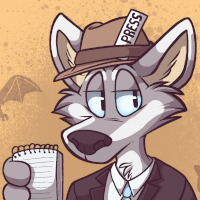The Guardian Herd: Stormbound, by Jennifer Lynn Alvarez – book review by Fred Patten.
by Patch O'Furr
Fred Patten, Furry’s favorite historian and reviewer, submits this review:
The Guardian Herd: Stormbound, by Jennifer Lynn Alvarez. Illustrated by David McClellan; map.
NYC, HarperCollinsPublishers/Harper, April 2015, hardcover $16.99 ([xiii +] 299 [+ 1] pages), Kindle $8.89.
Well, this is a big surprise! The Guardian Herd: Starfire, the first book in this series, listed 32 flying and talking horses in five herds. Others were mentioned during the adventure of the colt Starfire’s maturing to the over-stallion of his own herd. The obvious assumption was that this first sequel in a promised long series would switch to another pegasus named Stormbound. Instead, The Guardian Herd: Stormbound continues directly from where the previous novel ended. Stormbound isn’t the name of a pegasus; it’s the title of the second adventure.
The Guardian Herd: Starfire ended with Starfire (a.k.a. Star), the first all-black (except for the white star on his forehead) stallion in four hundred years, reaching his first birthday without being killed, coming into his power from the Hundred Year Star; and leading his followers – mostly yearlings like himself, plus older pegasi dissatisfied with the leaderships of the existing herds – into a new River Herd. As The Guardian Herd: Stormbound opens a month later, Star is still looking for a permanent territory for his new herd, away from the five hostile older herds. He has declined to become an over-stallion and has entrusted the River Herd to the guidance of a council of six more experienced pegasi; although the council consider themselves more as advisors under his leadership.



![AC01--Who_Killed_Kathleen_Gingers_[cover] (1)](https://i0.wp.com/dogpatch.press/wp-content/uploads/2015/05/ac01-who_killed_kathleen_gingers_cover-1.jpg?resize=350%2C544)






